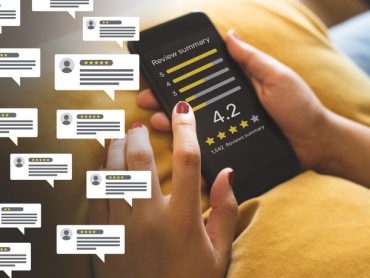Avoiding a Hotel Shutdown Calls for Compliance Technology
Having all suffered through the global travel lockdown this past spring, the scariest thought now is a reentry into pandemic conditions due to a second wave of the coronavirus. We’re already seeing this pattern emerge in states like Arizona, Florida and Texas, and with the virus still very active in many other countries, every hotel needs to do its part to prevent a localized COVID-19 resurgence.
More so than that, it’s a matter of reputation management, preventing personal lawsuits and safeguarding your room revenues by keeping properties open. Mitigating risk in today’s environment means that you need monitoring technology to straightforwardly prove via thorough and agnostic documentation that your entire team was compliant with the latest viral safety guidelines.
Now with months of data on its transmission, we know that many cases related to any Covid outbreak can be traced back to ‘super-spreader events’. You simply cannot let these happen at your hotel because, as previously alluded to, the media will drive your company name into the ground if you do end up playing host to such an event. And such a reputational quagmire could long outlast the pandemic. Next, as litigious as the United States is, you can bet that if your hotel is cited as negligently facilitating spread, you will be facing a lawsuit. Whether or not the claim has any validity, it’s still a headache and will require significant legal expenses in response. Finally, and perhaps worst, can you afford to have your property fully shutdown for another month or two, especially during peak season, due to a localized outbreak that implicates you as a possible source?
With these frightening dangers all within the realm of possibility, hotels are walking a tightrope. All it takes is one slip-up from any staff member to draw the ire of anxious municipal officials or to elicit the scorn of hair-trigger guests who are likely to vent their umbrage on TripAdvisor or other social media.
For some insights on how hoteliers can solve this problem, we reached out to Adria Levtchenko, CEO of PurpleCloud Technologies, a management software provider that has launched a platform with Covid-specific features, where she added, “In our present hypersensitive state of affairs, you need tools that can ensure team compliance as well as supply proper records of your adherence to the guidelines in order to minimize the potential for legal disputes and to keep the doors open. With such narrow margins on revenues already and swelling LPARs due to all the new sanitization standards, the only way to monitor all this is through integrated management software.”
Then there is the prospect of bringing groups back to your hotel. Employers can no longer risk sending their people to a property that does not heed the new guidelines, and they will be willing to pay a higher nightly rate for that assurance. Secondly, many meeting and event planners won’t even consider you for their room blocks if you aren’t able to provide certain safety guarantees for their attendees. Together, this makes technology practically unavoidable for restoring group travel confidence.
Given the need for platforms adapted to effectively ‘cover your assets’ from Covid, there are four new features to be on the lookout for when deciding what to rapidly implement.
1. Mandatory online training. Prior to Covid, web-based courses were available, but there was always pushback to make them absolute requirements for employees to work. Now, however, with physical distancing still vastly important, you must have the ability within your administrative dashboard to set certain reading materials and videos as compulsory before you can allow team members onsite. Further, systems can be set up to offer granular recordkeeping of who has looked at each provision, at what time and for how long.
2. Testing on that training. It’s one thing to scan a document or to zone out while watching a tutorial; it’s a whole other to be keenly engaged with the coursework so that the information is actually remembered. The only real way to motivate employees to thoroughly absorb their training is to quiz them on what they learned. Knowing that they will be tested afterwards inherently encourages more active participation at the outset, while recurrently poor test scores can clue you into those individuals who require extra coaching or disciplinary action.
3. Visually demonstrated compliance. Prove that your task is scrupulously completed by showing, not telling. The new cleaning protocols have already increased labor costs substantially, and the last thing you need is for your team members to have to manually document everything to further drain their time. Instead, a picture is worth a thousand words; enabling staffers to quickly upload an image of their work can provide the same level of compliance as a written record but in a fraction of the time.
4. Analytical report generation. With all the data points generated by the above three features, it’s easy for managers to get bogged down by the multitude of numbers. Instead, these need to be compiled into clear and concise reports for executives to swiftly review and identify actionable next steps. Plus, said reports are exactly what any auditing process will demand, and having them at the ready will help alleviate any governmental concerns or lawsuits.
As we transition into the next normal of more localized travel, the reawakening of groups and the constant threat of a second wave, you need technology that can cover your assets while maintaining a lean team and keeping costs low.
Naturally, there are many other compliance tools that can be deployed in the form of specific software modules and hardware that function using NFC or BLE nodes to offer point-to-point location analysis that can also be anonymized to prevent any Big Brother-type situations. The four features mentioned above still represent a clear first step that’s also quite painless to implement, and luckily diligent management software vendors are pivoting in this direction, so be sure to ask about these when you approach a vendor.




